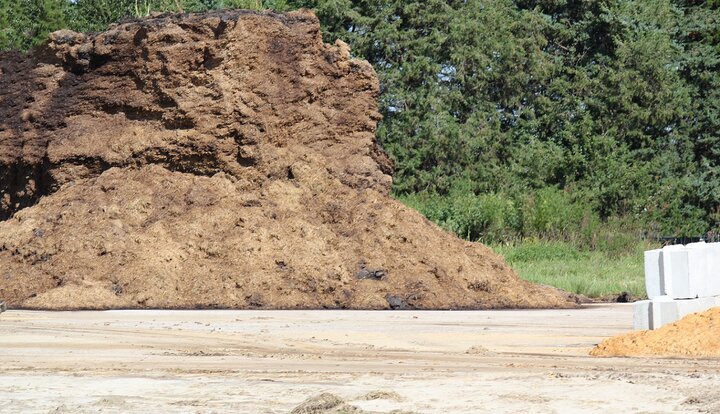“What material should I use for my new silage pad?” is probably a question most producers ask once a decade at most, but it is an important decision for maintaining an efficient feeding program. Asphalt (e.g. ‘blacktop’) generally can be poured for lower upfront cost and holds up well when exposed to the acids in silage leachate, but is not as durable as concrete otherwise. Concrete holds up better under extended use, especially in high-traffic areas, but is degraded by silage acids. The life expectancy of both materials largely depends upon the integrity and moisture content of the underlying base. A poorly drained site or poorly prepared base will undermine the best-laid pavements.
Given its resistance to silage acids, asphalt is an attractive option for storage pads and bunker silo floors. Those looking to use asphalt will want to ensure that the floor is constructed properly, forming the pad in multiple layers to achieve the thickness and strength desired. Producer-oriented guidance on paving asphalt pads – based upon a fact sheet put out by the Asphalt Pavement Alliance – is available (https://www.progressiveforage.com/forage-production/harvest-and-storage/hot-mix-asphalt-for-silage-floors-and-feeding-bunkers). The areas of greatest concern for asphalt pads are near the edges and where equipment will frequently be maneuvered, such as the apron to a bunker or trench silo. Some asphalt pads have been constructed with concrete aprons to provide extra durability where feed trucks/wagons are unloaded and loaded most often.
Many prefer a concrete pad for its durability and will look to surface coatings to provide protection from silage acids. While not a common research topic in the U.S., recent European research into Issues of Concrete in Silage Pits studied the protection provided by commonly available – typically epoxy or polyurethane – products and found that they do not hold up very long or well to the combined actions of silage acids and mechanical action on the pavement. Use of additives in the mix was suggested as likely being more effective, but has not been studied or proven for silage pads. Producers who have successfully used concrete silage pads advise building in more strength (e.g. added rebar) and paying more attention to control cracks, as restricting entry of leachate into and underneath the pad are keys to extending its useful life. Building a New Silage Base is a good read for anyone looking to construct a concrete silage pad – just be prepared to convert metric units, as the publication is available through TEAGASC, an agricultural research center in Ireland.
Interviews with the authors of BeefWatch newsletter articles become available throughout the month of publication and are accessible at https://go.unl.edu/podcast.

